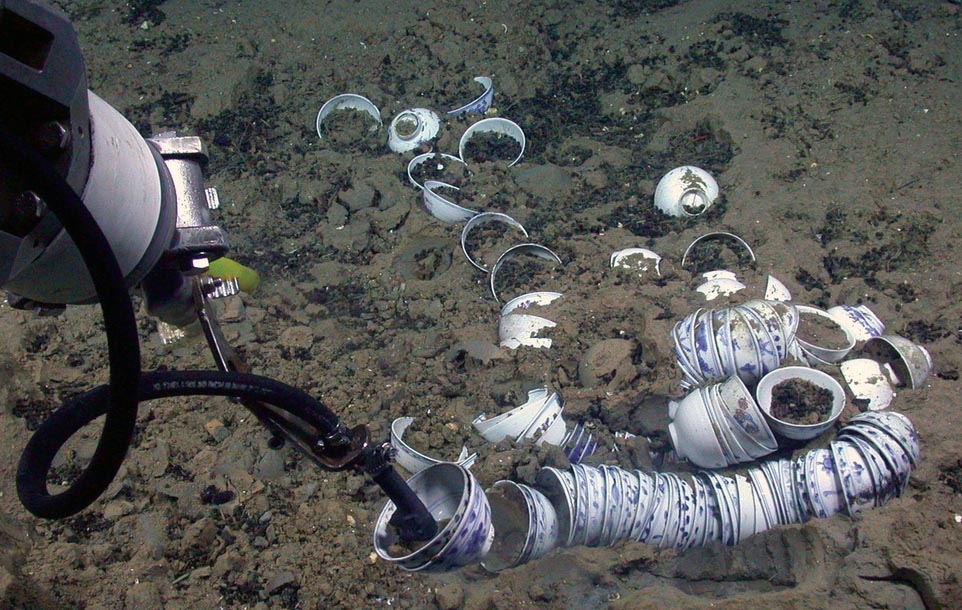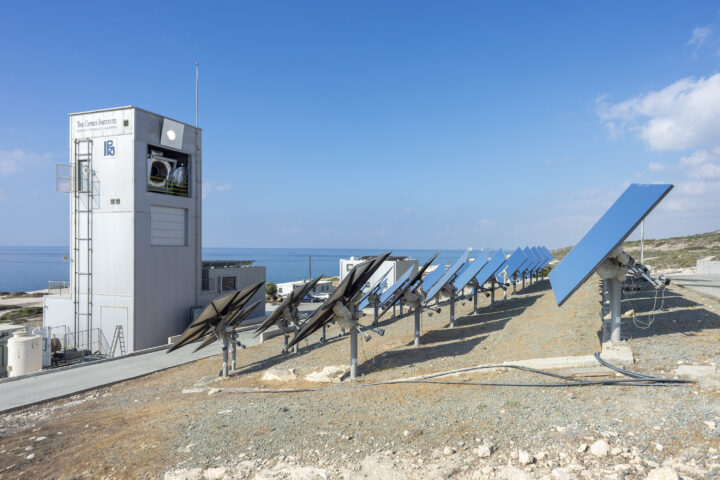A row has broken out between Cyprus Antiquities Department and a British company excavating ancient shipwrecks in the Eastern Mediterranean, over a treasure of artefacts confiscated by Cypriot authorities back in 2015.
The row erupted after a British company, called Enigma Recoveries, unveiled news of spectacular treasures from 14 cultures including Chinese Ming dynasty bowls found in a dozen wrecks in the waters between Cyprus and Lebanon.
Hellenistic, Roman and early Islamic and Ottoman artefacts were on the list.
The fascinating collection of 588 artefacts was found in one Ottoman vessel dating from 1630, which had sunk in the Levantine Basin.
Cypriot authorities have accused Enigma Recoveries of illegally excavating ancient shipwrecks in the eastern Mediterranean and “violently extracting objects, causing destruction to their context”.
The artefacts in question were confiscated from a boat which had docked at the Limassol port after authorities said they were illegally excavated.
Enigma raised many questions such as who owned the finds and what would happen to them.
The items are at present impounded by the customs department, but the company claims that Cyprus is planning to auction them off.
Enigma Recoveries, which used Limassol as its base for the marine excavations which ended in 2015 under the codename Enigma shipwrecks Project, says the artefacts could be in a museum by now, to be appreciated by a wider audience.
But instead, they are being held by Cypriot authorities.
The Department of Antiquities has denied the accusations saying the company is well known for its illicit underwater excavations and their intention to sell objects.
In a strongly-worded statement issued by the department said: “The company is well known both to Cyprus and other countries, as well as international organisations, including UNESCO, for its activities in illicit underwater excavations and their intention to sell objects is evident in the documents filed with the United States Securities and Exchange Commission”.
The department gave a link as proof of its claims which fails to connect to an active site.
“The Cypriot authorities will not, under any circumstances, be auctioning the objects as erroneously reported, since this does not only contravene the ethical code, but it is also prohibited by the antiquities law of Cyprus.” The department said.
The Antiquities Department when asked to comment further on the case by the Financial Mirror, refused to do so, stating that their statement was sufficient.
Enigma insists its actions were not illegal and says its research ship was entering and departing Cyprus multiple times.
Reportedly, the company said that the ship’s crew was not aware Cyprus required the cultural artefacts recovered to be listed as ‘cargo’ – which prompted the local customs department to seize the objects.
When approached by the Financial Mirror the Antiquities Department declined to explain why the artefacts were kept for five years in Cyprus, as Enigma argues “they were found in the Levantine Basin, in waters beyond any country’s territory”.
The department also failed to clarify who is the legal owner in their view, what actions it has taken since the artefacts were confiscated, nor did it reveal what would be done next.
Reportedly, the British-led team of scientists and archaeologists discovered 12 shipwrecks in the Levant Basin in the Mediterranean Sea in 2015.
A lot at stake
The vessel in question is an Ottoman colossus which sunk around 1630, containing goods of 14 cultures and nations from the Levant and as far away as Italy, Spain, Yemen, Iran, India and China.
On the ship, the scientists reportedly found glass and ceramics from Belgium, Spain, Italy, Yemen and the Persian Gulf alongside Arabian incense and Indian peppercorns. The vessel sank in the reign of the sultan Murad IV (r. 1623-1640).
Sean Kingsley, director of the Centre for East-West Maritime Exploration and archaeologist for the Enigma Shipwrecks Project (ESP), told British paper The Observer: “This is truly ground-breaking, one the most incredible discoveries under the Mediterranean.”
The ESP believes that the discovery of the Ottoman wreck is worth more than just the value of artefacts found on board as Kingsley argues “the ship, which is thought to have sunk around 1630, while sailing between Egypt and Istanbul, is a time-capsule that tells the story of the beginning of the globalised world”.
ESP says the ship reveals a previously unknown maritime silk and spice route running from China to Persia, the Red Sea and into the eastern Mediterranean.
“The goods and belongings of the 14 cultures and civilisations discovered, spanning on one side of the globe China, India, the Persian Gulf and the Red Sea, and to the west, North Africa, Italy, Spain, Portugal and Belgium, are remarkably cosmopolitan for pre-modern shipping of any era,” he told The Observer.
Reportedly, in the ship’s hold, there was also the earliest Chinese porcelain found on a Mediterranean wreck and the first discovered in the Near East.
The 360 cups, dishes and a bottle were made in the kilns of Jingdezhen during the reign of Chongzhen, the last Ming emperor.
Decorated with idyllic rural scenes, figures and floral motifs, and designed for sipping tea, in Ottoman hands the 51 styles of blue-and-white cups were adapted to a new fashion sweeping the East — coffee drinking.










